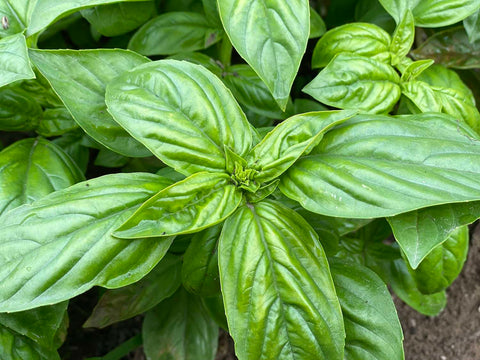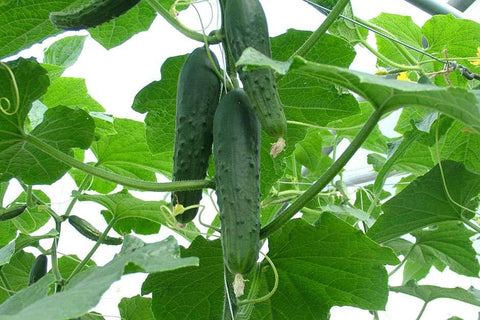A lively garden's heart and soul are its healthy plants. They not only provide aesthetic beauty but also contribute to the ecological balance of their environment. When plants thrive, they create habitats for beneficial insects, attract pollinators, and even improve air quality. However, this delicate ecosystem can be threatened by pests and diseases, making it crucial for gardeners to cultivate resilience in their plants. Strengthening their natural defenses is not just about surviving but flourishing amid challenges.

Understanding Plant Resistance
What Does Plant Resistance Mean?
Plant resistance refers to the inherent ability of plants to fend off pests and diseases. This resistance can manifest in various forms, from physical barriers like thick leaves and waxy coatings to biochemical responses that deter hungry insects. Understanding how these mechanisms work is essential for any gardener aiming to cultivate a robust garden.
The Role of Genetics in Plant Health
Genetics plays a pivotal role in a plant’s resilience. Some varieties have been bred specifically for disease resistance, making them less susceptible to common garden maladies. These genetically endowed traits can include faster growth rates, enhanced root systems, and increased production of natural pesticides. When selecting plants for your garden, opting for those with strong genetic resistance can set the foundation for a healthier garden.
How Environmental Factors Influence Resistance
Environmental conditions such as soil quality, climate, and water availability significantly impact a plant's health and resilience. Stressors like drought, excessive moisture, and nutrient deficiencies can weaken plants, making them more vulnerable to pests and diseases. Conversely, a well-balanced environment helps plants build strong defenses, enabling them to resist unwanted intruders effectively.
Healthy Soil: The Foundation of Resilience
The Connection Between Soil Health and Plant Strength
Each successful garden starts with healthy soil. It provides essential nutrients, supports root development, and facilitates water retention. The intricate web of microorganisms in healthy soil also contributes to nutrient cycling, enabling plants to access the nourishment they need. When soil health is compromised, plants suffer, leaving them susceptible to diseases and pests.
Essential Nutrients for Robust Plant Growth
Plants require a balanced diet of macronutrients and micronutrients to grow robustly. Nitrogen, phosphorus, and potassium are vital for overall plant health, while trace elements like magnesium, iron, and zinc play crucial roles in metabolic processes. Regularly testing soil can help you identify nutrient deficiencies, allowing you to amend the soil appropriately and ensure your plants are thriving.
How to Improve Soil Quality with Organic Matter
Incorporating organic matter, such as compost or well-rotted manure, can dramatically enhance soil quality. This enriches the soil with nutrients, improves its structure, and boosts microbial activity. By regularly adding organic matter, gardeners can create a fertile environment where plants flourish, thus fortifying their natural defenses against pests and diseases.
Watering Wisely
The Importance of Proper Watering Techniques
Water is essential for plant health, but how and when you water can make a significant difference. Proper watering techniques—such as deep watering rather than shallow sprinkling—encourage deep root growth, enabling plants to access moisture during dry spells. Overwatering can lead to root rot and other diseases, while underwatering can stress plants, making them more vulnerable to infestations.
Signs of Overwatering and Underwatering
Maintaining the health of plants requires an understanding of the indicators of overwatering and underwatering. Overwatered plants often exhibit yellowing leaves, wilting, or root rot, while underwatered plants may show browning leaf edges, drooping, or stunted growth. By understanding these signs, gardeners can adjust their watering practices to ensure optimal plant health.
How to Create a Watering Schedule for Optimal Growth
Creating a watering schedule tailored to the specific needs of your plants is key to their resilience. Factors such as plant type, soil moisture levels, and seasonal changes should inform your approach. By regularly monitoring your plants and adjusting your watering routine, you can provide them with the hydration they need to thrive without overwhelming them.

Creating a Biodiverse Garden
The Benefits of Biodiversity for Pest Control
Biodiversity is a key component of a healthy garden. A diverse array of plants can create a more balanced ecosystem, where natural predators keep pest populations in check. By fostering biodiversity, gardeners can reduce reliance on chemical controls and promote a healthier, more resilient garden.
Attracting Beneficial Insects: Nature’s Warriors
Beneficial insects, such as ladybugs, lacewings, and predatory wasps, are invaluable allies in the fight against pests. These natural predators can significantly reduce pest populations and minimize damage to plants. To attract beneficial insects, incorporate flowering plants that provide nectar and pollen, creating a haven for these essential allies.
Designing Your Garden to Support Ecosystems
Designing a garden that supports ecosystems involves creating a variety of habitats and microclimates. By incorporating diverse plant types, providing shelter, and ensuring access to water, gardeners can create an inviting environment for beneficial wildlife. This not only enhances the resilience of plants but also fosters a thriving ecosystem.
Regular Monitoring and Maintenance
How to Spot Early Signs of Pests and Diseases
Early detection is vital for managing pests and diseases. Regularly inspecting your plants for signs of distress—such as discoloration, unusual growth patterns, or visible pests—allows for prompt intervention. The sooner you identify a problem, the easier it is to mitigate potential damage.
The Importance of Routine Inspections
Routine inspections of your garden should become part of your gardening ritual. Walking through your garden regularly allows you to catch issues early, assess plant health, and make adjustments as needed. This proactive approach fosters a healthier garden and reduces the likelihood of severe infestations or outbreaks.
Keeping a Garden Journal: Your Best Defense
Maintaining a garden journal can be an invaluable tool for tracking plant health and identifying patterns over time. Documenting watering schedules, pest sightings, and weather conditions helps you analyze what works and what doesn’t. This knowledge can empower you to make informed decisions that enhance your garden’s resilience.
Natural Pest Control Methods
The Power of Neem Oil and Other Natural Remedies
Natural remedies can be powerful allies in pest control. Neem oil, derived from the seeds of the neem tree, is known for its effectiveness against a range of pests while being safe for beneficial insects. Additionally, other natural remedies—such as diatomaceous earth and insecticidal soap—can provide safe alternatives to chemical pesticides.
Homemade Sprays: Recipes for Success
Crafting homemade sprays can be a fun and effective way to manage pests. Common ingredients like garlic, chili pepper, and soap can be combined to create potent deterrents. Experimenting with different recipes allows gardeners to find solutions that work best for their specific pest challenges.
Using Essential Oils for Plant Protection
Essential oils have gained popularity as natural pest deterrents. Oils like peppermint, rosemary, and lavender not only impart delightful aromas but also repel various pests. Diluting these oils in water and applying them to plants can enhance their defenses without harming the environment.

Mulching for Healthier Plants
The Benefits of Mulch: More Than Just Aesthetic
Mulching offers a myriad of benefits that go beyond visual appeal. Organic mulch, like wood chips or straw, helps retain soil moisture, regulate temperature, and suppress weed growth. Additionally, as mulch decomposes, it enriches the soil with nutrients, promoting healthier plants.
How Mulch Helps Retain Moisture and Suppress Weeds
One of the key functions of mulch is its ability to conserve moisture in the soil. By creating a barrier against evaporation, mulch helps plants withstand dry spells. Moreover, it inhibits weed growth by blocking sunlight, reducing competition for resources, and allowing your plants to thrive.
Choosing the Right Type of Mulch for Your Garden
Choosing the right type of mulch is essential for maximizing its benefits. Organic mulches enrich the soil as they break down, while inorganic options like gravel or stones can offer longer-lasting coverage without decomposing. Consider the needs of your plants and your garden's aesthetic when selecting mulch to ensure a harmonious balance.
Fertilizing for Strength
The Role of Fertilizers in Plant Resilience
Fertilizers play a crucial role in promoting plant resilience. By providing essential nutrients, they support healthy growth and development, allowing plants to better withstand pests and diseases. However, understanding the right type and timing of fertilization is key to maximizing their effectiveness.
Organic vs. Synthetic Fertilizers: What’s Best?
The choice between organic and synthetic fertilizers often depends on your gardening philosophy. Organic fertilizers, derived from natural sources, tend to improve soil health over time. Synthetic fertilizers provide immediate nutrient availability but can sometimes lead to soil degradation if used excessively. Assessing the pros and cons of each type can guide your fertilization strategy.
Timing Your Fertilization for Maximum Effect
Timing your fertilization is essential for achieving optimal plant health. Applying fertilizers at the beginning of the growing season can kickstart growth, while mid-season applications can bolster plants during their peak growth phases. Tailoring your fertilization schedule to your specific plants’ needs can enhance their resilience significantly.
Integrating Technology in Plant Care
Smart Gardening Tools for Monitoring Plant Health
Advancements in technology have introduced a range of smart gardening tools that make monitoring plant health easier than ever. From soil moisture sensors to plant health apps, these tools provide real-time data, allowing gardeners to make informed decisions. Embracing technology can streamline your gardening efforts and improve plant resilience.
Apps to Help You Track Pests and Diseases
Numerous apps are available to assist in tracking pests and diseases, providing timely alerts and identification tips. These digital resources can enhance your ability to respond to potential threats, allowing you to take action before issues escalate. Using technology as a gardening ally can significantly improve your success.
Using Sensors for Precision Watering and Fertilization
Sensors can optimize your watering and fertilization practices by providing precise measurements of soil moisture and nutrient levels. This ensures your plants receive just the right amount of water and nutrients, reducing waste and promoting healthier growth. Integrating these technologies into your gardening routine can enhance your plants’ resilience against stressors.

Creating a Healthy Ecosystem
The Importance of Balance in Your Garden
A balanced garden ecosystem is essential for promoting plant health and resilience. Each component, from the soil and plants to the insects and animals, plays a vital role in maintaining harmony. Striving for this balance allows for natural pest control and healthier plants.
Encouraging Wildlife: Birds, Bees, and Beneficial Bugs
Encouraging wildlife in your garden can significantly enhance its resilience. Birds, bees, and beneficial insects contribute to pollination and pest control, promoting a thriving garden. You can create an inviting environment for these valuable allies by providing food sources, water, and shelter.
How a Diverse Garden Can Minimize Pest Outbreaks
A diverse garden minimizes the likelihood of pest outbreaks by creating a complex environment that pests find challenging to navigate. With a variety of plants and habitats, natural predators can thrive, keeping pest populations in check. This diversity fosters a healthier ecosystem, leading to more resilient plants.
Gardening is an art and a science that invites experimentation. By strengthening plants' defenses against pests and diseases, you cultivate not only a thriving garden but also a deeper connection to nature. In this ongoing journey, every small effort contributes to a vibrant ecosystem, where plants flourish and resilience reigns supreme.









